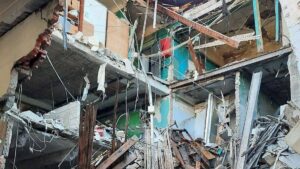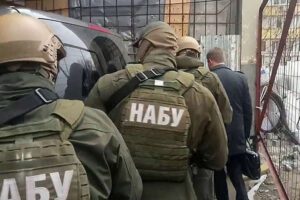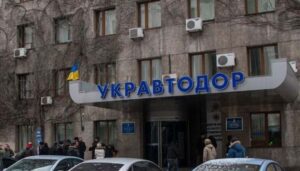
The administration of US President Joseph Biden is asking the US Congress to allocate additional security and economic assistance to Ukraine in the amount of $11.7 billion, as well as $2 billion in domestic energy supplies to offset the impact of the war on the global energy market, writes in Friday the American edition of The Hill.
“We have rallied the world to support the people of Ukraine and defend our democracy, and we simply cannot let that support for Ukraine dry up,” an unnamed administration official told reporters.
Specifically, the White House is asking Congress to approve $4.5 billion for military equipment and Pentagon resupply, $2.7 billion for defense and intelligence assistance for Ukraine, and $4.5 billion for budgetary support for the government of Ukraine.
The $2 billion request to support domestic energy sources is distributed as follows: $1.5 billion for fuel for nuclear reactors and $500 million for the modernization of the Strategic Petroleum Reserve.
The White House says the funds are needed to maintain the pace of assistance to Ukraine during the first three months of fiscal year 2023, which begins in early October. An administration official said roughly three-quarters of the funds previously approved by Congress for Ukraine had already been spent or disbursed.
The publication recalls that Congress, on a bipartisan basis, has already approved the allocation of more than $53 billion in security, economic and humanitarian assistance to counter the Russian invasion of Ukraine this year. The White House expects that these funds will be enough until the end of the fiscal year.
Both parties support sending aid to Ukraine as it battles more than six months of attacks from Russia, although it is possible that at least some Republicans will doubt the latest funding request.
In addition to increased funding for Ukraine, the White House is also asking Congress to authorize additional billions to fund the federal government’s response to the Covid-19 pandemic, monkeypox response, and disaster relief. The emergency funding request is $47.1 billion.
Number of unemployed in Ukraine and job opportunities, Jan 21 – June 22


Civilian casualties from February 24, when Russia launched a war against Ukraine, to August 28 amounted to 13,718 civilians (a week earlier – 13,477), including 5,663 dead (5,587), the Office of the United Nations High Commissioner for Human Rights (OHCHR) reported in Monday.
“The majority of reported civilian deaths or injuries were caused by the use of explosive weapons with a wide area of effect, including shelling from heavy artillery and multiple launch rocket systems, as well as rocket and air strikes,” the document notes on UN data.
This applies, for example, to Mariupol (Donetsk region), Izyum (Kharkiv region), Lysichansk, Popasnaya and Severodonetsk (Luhansk region), where numerous civilian deaths or injuries were reported.
According to confirmed UN data, 2,195 men, 1,512 women, 178 boys and 149 girls died, while the sex of 38 children and 1,591 adults has not yet been determined.
Among the 8,055 injured were 239 boys and 177 girls, as well as 207 children whose gender has not yet been determined.
Compared to August 21, 3 children died and 13 more were injured.
If earlier the OHCHR report on the number of casualties was published daily, and then only on weekdays, since July it has become a weekly one. In this report, as in the previous one, data are also given by months.
According to them, March remains the deadliest month for civilians, with a minimum of 3,182 deaths. In April, according to an OHCHR publication, the number of civilian deaths due to the war fell to 681; in May, to 462; and for the four weeks of August – 268, the UN points out.
At the same time, the number of wounded in July – 1099 – was higher than in June and May – respectively 1029 and 1016, but lower than April and March – respectively 1254 and 2400. Since the beginning of August, 795 people have been injured.
According to the report, in the four weeks of August, 262 people were killed and 751 injured by explosive weapons with a wide area of effect, while mines and explosive remnants of war killed 6 and injured 44 people (5% of the total casualties).
The summary has traditionally stated that the increase in figures from the previous summary should not be attributed only to cases after August 21, since during this period the Office verified a number of cases from previous days.

Prosecutors of the Specialized Anti-Corruption Prosecutor’s Office and detectives of the National Anti-Corruption Bureau have informed eight persons of suspicion involved in the embezzlement of property and funds of Ukrnafta in the amount of over UAH 13 billion, the SAP press service reports.
“In the course of the pre-trial investigation, it was established that the officials of five commercial enterprises, by prior collusion with the officials of PJSC Ukrnafta, in particular the acting chairman of the board and the heads of two structural units of the enterprise (positions indicated at the time of the crime), which in Violation of the requirements of the current legislation, which provides for advance payment for the supply of oil without its implementation during March-August 2015, placed in favor of commercial enterprises oil with a total value of more than 10 billion hryvnias, which the officials of these enterprises took possession of, causing losses to PJSC “Ukrnafta” for the specified amount,” the Telegram channel said.
It was also established that in July 2015, Ukrnafta officials concluded 52 contracts with a commercial enterprise for the supply of oil products in the amount of over UAH 2.5 billion for the benefit of Ukrnafta, which, in turn, made advance payments in full. However, in the future, “Ukrnafta” entered into additional agreements to postpone the delivery of oil products until the end of 2018, which as a result, the commercial enterprise never delivered, and the officials of the commercial enterprise took possession of the money paid in advance and transferred it to the accounts of non-resident enterprises.
The actions of the suspects are classified under Part 5 of Art. 191 (seizing someone else’s property by abusing an official’s official position, by prior collusion by a group of persons, in particularly large amounts) of the Criminal Code of Ukraine.
The specified actions are punishable by deprivation of liberty for a term of seven to 12 years, with deprivation of the right to hold certain positions or engage in certain activities for a term of up to three years, and with confiscation of property.

Yesterday a new academic year began in Ukrainian schools. At the same time, due to the realities of martial law, the organization of the educational process in different regions differs significantly. Territorial became the determining criterion for choosing the form of education this year. According to Minister of Education Sergei Shkarlet, students are divided into categories depending on their place of residence at the start of the school year. Depending on this, the forms of education can be selected: full-time, distance, mixed, family, or external studies.

In Kyiv, most schools will continue to use the traditional full-time form of education. According to the KMDA, about 68% of schools in the capital are equipped with shelters, the capacity of which will directly affect the number of students in the classes. This should be determined by a special commission. At the same time, according to the survey, about 70% of parents of Kyiv students choose the full-time form of education for their children.
Oksana Poenko, the founder and director of the Mainstream school in the capital, believes that the choice of the form of education in the current conditions should be individual.
“Now the safety of the child is of decisive importance, depending on this, the format of education can be different. If the school is equipped with a reliable shelter, then it can be even a safer place than a residential building where such shelter may not be,” she said.

According to Oksana Poenko, one should not forget about the traditional advantages and disadvantages of distance or face-to-face education.
“The best option for learning, in my opinion, is now a mixed form, when individual subjects can be taught remotely. The specifics of the course itself are of great importance. Some disciplines are much better perceived by students through the full-time form. We have implemented several concepts at our school as full-time, For example, there are specialized classes for older students, as well as an online school for distance education,” Poenko stressed.
In her opinion, the initiative of the Ministry of Education to reduce the number of students in classes and introduce two-shift education is correct not only for security reasons but also from a purely pedagogical point of view.
“Since 2016, the Mainstream School has been using a methodology to create a special social environment for students, when their individuality is maximally supported. It is optimal for a teacher to maintain communication with no more than 10 students during a lesson. Yes, there are state standards that say about 25-30 students, but, in my opinion, this is an outdated practice that should be abandoned long ago. In such a class, the teacher simply does not have time to pay enough attention to everyone, and this is very important for the development of the child’s individuality,” Poenko said.

The Mainstream School was founded in October 2016. The purpose of creating an educational institution was the need for quality education for children. The school appeared as an alternative to the state one, and over the years of working with children, it can be said with confidence that studying in a private school of a new format has its advantages. And the increase in the number of students by 10 times suggests that the positive aspects of such education are obvious!
Education in the school is focused primarily on the quality of education and the preparation of the student. The educational process at the school is focused primarily on the quality of education and the preparation of the student. The level of education of the child meets not only the requirements of state standards but also the obligatory needs of a modern person – the ability for independent and harmonious development, self-learning, and self-organization.
DISTANCE_EDUCATION, EDUCATION, MAINSTREAM_SCHOOL, OKSANA_PAENKO, SCHOOL

The State Agency for Highways of Ukraine (Ukravtodor) is considering the possibility of attracting additional funding for road repairs this year.
“We are considering all possible options, in particular, both credit and grant funds. We are negotiating with our European partners and not only with them about raising funds from various sources. It is too early to talk about any specific decisions and projects, but I think that in a month we will be able to substantively announce the final stage of negotiations and the amounts that we can raise before the end of this year,” Andriy Ivko, first deputy head of Ukravtodor, said in an interview with Interfax-Ukraine.
He noted that even after the agreed deferment of payments on Eurobonds, international partners are ready to meet halfway in matters of attracting additional financing by Ukravtodor.
“Even in civilian life, these are common practices in both the public and private sectors. We have force majeure, the biggest war on the European continent continues, so they meet us halfway. And restructuring will make it easier for us to endure what is happening today. I have from a financial point of view,” he said.
As reported, since August 11, 2022, Ukravtodor, which placed debut Eurobonds worth $700 million maturing in 2028 at a rate of 6.25% in June last year under state guarantees, received the consent of the holders of these securities to defer interest payments on them and transfer their maturity for two years.